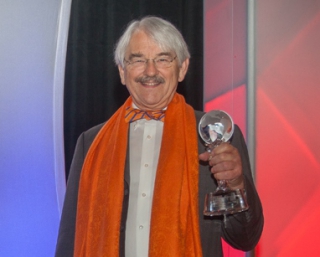
Lecturing Backward as a Teaching Strategy
29 September 2017Unexpectedly asking students to define terms and concepts keeps them focused and attentive.
By Dr. Fred Mayo, CHE, CHT
Last month, we discussed innovative ways to start classes and this month we will explain the values and methods of lecturing backward. It is part of a fall teaching strategies series.
Value of Lecturing Backward
There are many reasons to lecture backward, but the most important one is the challenge it provides to students to stay attentive and figure out what is important and what is minor about the material. Students tend to stay focused since they don’t know if they might be called on. In addition, when a question is being asked or a term being defined, they have a chance to see if they know the answer. This process of self testing helps promote their thinking and fosters retention. In addition, backward lecturing builds habits of critical thinking.
Strategies for Lecturing Backward
There are two major ways to lecture backward: terms and questions. First, we will look at the term process. It involves the use of concepts and key terms on a slide (or blackboard or whiteboard). Instructors ask a student to pick a term, define it, and explain its importance or value. Based on the student’s answer, you can correct the errors or push the student to be clearer about the definition.
One of the challenges I find is that students often use the words in the term to define the term; therefore, I encourage them to use other words so their definition is detailed. I also find that they are not very good at explaining why a term is important or the term’s value. For example, a student might define mise en place as putting things in order, but they have no idea why it was important except that the chef keeps using the term. You now have a chance to help that student come up with another way to explain mise en place and its importance in preparing food while saving time, energy, and expense.
An alternative way to correct students is to have a second student correct the one who provided the term’s definition and explanation. That way you are able to assess the knowledge of two people. It also keeps everyone observant since they don’t know if they are going to be called on to evaluate the first answer. Of course, if you use this technique, then you need to avoid providing any non verbal clues when the first student provides information. Otherwise, you have already indicated that he or she is correct or incorrect. This teaching backward method is a great way to assess students’ knowledge of key concepts covered in the reading for the week or for the class session. It also keeps everyone focused and thinking.
To start the process, I toss a ball to a student and ask the person to pick a term, define it, and provide an example or explain its significance. Then that student picks the next person. It is a way to encourage students to pay attention to who has been called on and who needs a chance.
A second teaching backward strategy involves using questions from students. After reviewing the quote for the day, the schedule, announcements, and learning objectives, I start each class with an invitation to ask any questions about topics they do not understand or any issue that was unclear in the reading. Often, a question leads to a review of a key concept and a chance to explain it, give examples, and expand the discussion in the reading materials. I also use that opportunity to compare that concept with other similar ideas. For example, I was asked the other day to explain the difference between loaded questions and leading questions – which I did and then used it to point out the difference between two other similar types of questions – rating and ranking questions. These are questions often misunderstood by students. I got the chance to focus on more complex information by comparing information in this way.
When I use this technique, I compliment students for asking questions, indicating that others probably had the same question but were afraid to ask. It often encourages other questions. In the class, they take notes during the discussion and stay focused on what they do not know and what they don’t understand. In some classes, we have spent the whole session answering questions, sometimes by giving one student a chance to answer a question posed by a different student. In this way, we can cover all the material for the class session. Later I post the PowerPoint slides on the classroom management system for students to refer.
Summary
Have fun trying these methods of lecturing backward. Next month, we will talk about alternative ways of conducing demonstrations and then teaching professionalism while focusing on content.
If you have suggestions for other topics or teaching practices you want to share, send them to me at This email address is being protected from spambots. You need JavaScript enabled to view it., and I will include them in future Mayo Clinics.
Dr. Fred Mayo, CHE, CHT, is retired as a clinical professor of hotel and tourism management at New York University. As principal of Mayo Consulting Services, he continues to teach around the globe and is a regular presenter at CAFÉ events nationwide.
